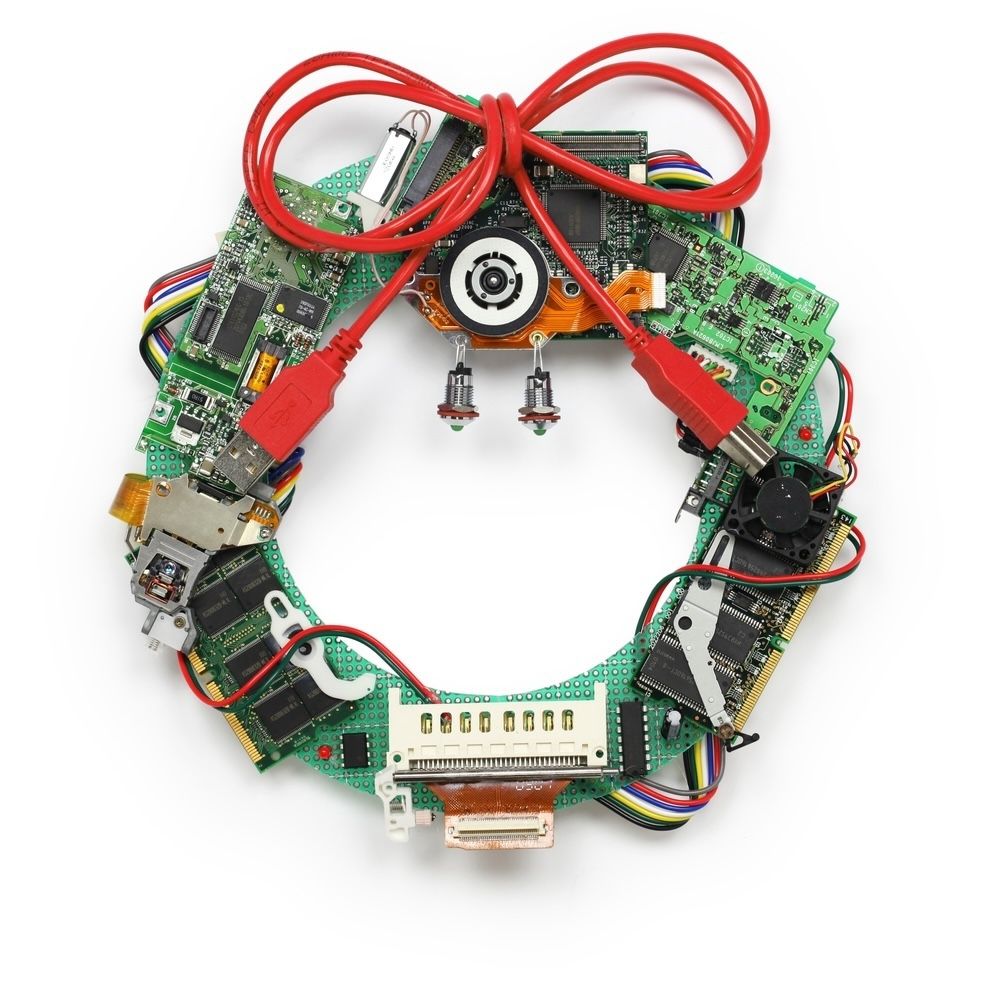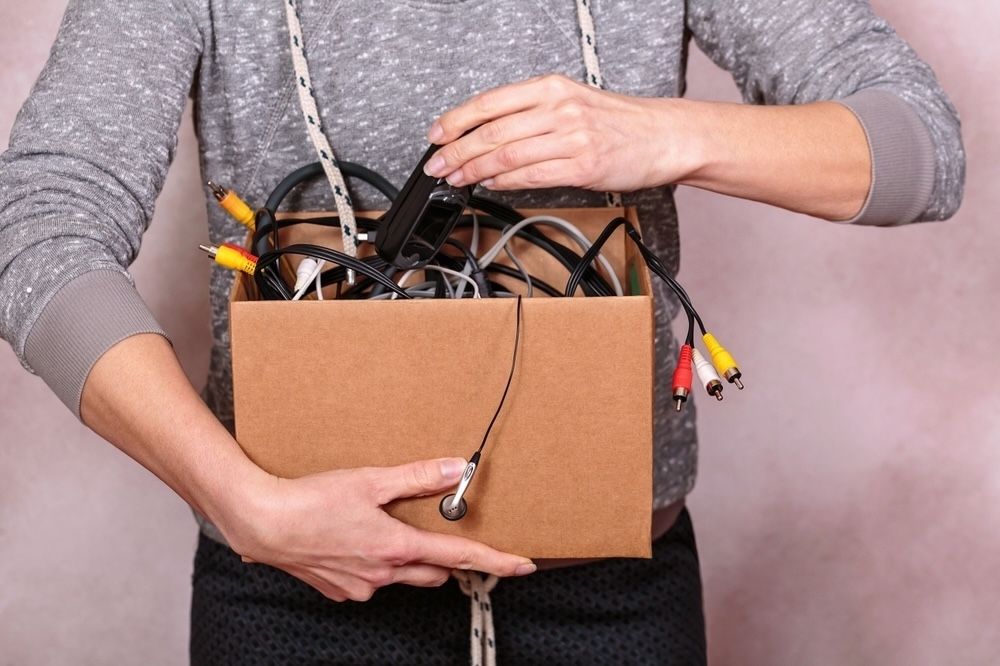Turning E-Waste into Treasure: Repurposing Old Electronics

In today's technology-driven world, electronic waste, or e-waste, has become a significant environmental concern. With the rapid pace of technological advancements, old electronics are often discarded, contributing to the growing e-waste problem. However, these outdated gadgets can be repurposed into functional and decorative items, reducing waste and giving new life to what might otherwise end up in a landfill. This article explores creative and practical ways to repurpose old electronics, helping you minimize waste and contribute to a more sustainable future.
Understanding the E-Waste Problem
E-waste includes discarded electronic devices such as computers, smartphones, tablets, and other electronic appliances. According to the Global E-waste Monitor, the world generated a staggering 53.6 million metric tons of e-waste in 2019, and this number is projected to increase to 74.7 million metric tons by 2030. E-waste contains hazardous materials like lead, mercury, and cadmium, which can harm the environment and human health if not properly managed. By repurposing old electronics, we can help reduce the amount of e-waste and its associated environmental impact.
The Environmental Impact of E-Waste
E-waste is one of the fastest-growing waste streams globally. The improper disposal of e-waste leads to the release of toxic substances into the environment, contaminating soil, water, and air. These pollutants can cause serious health issues, including neurological damage, respiratory problems, and even cancer. Moreover, e-waste often ends up in developing countries where informal recycling processes can expose workers to hazardous conditions. By repurposing and properly recycling electronics, we can mitigate these negative impacts and promote a healthier environment.
Economic Benefits of Repurposing E-Waste
Repurposing e-waste not only benefits the environment but also offers economic advantages. By extending the life of electronic products, we can reduce the demand for new raw materials, conserve natural resources, and reduce the energy consumption associated with manufacturing new devices. Additionally, repurposing can create new business opportunities and jobs in the fields of refurbishing, upcycling, and creative reuse.
Creative Repurposing Ideas
1. DIY Electronic Art
Old circuit boards, computer parts, and other electronic components can be transformed into unique pieces of art. By arranging these parts creatively and adding a touch of paint or lighting, you can create modern, tech-inspired wall art or sculptures that serve as conversation pieces. Artists and hobbyists alike have found that the intricate designs of circuit boards make for compelling and visually striking artworks.
Step-by-Step Guide to Creating Electronic Art:
Gather old electronic components such as circuit boards, resistors, capacitors, and wires.
Clean and prepare the components by removing dust and dirt.
Plan your design by arranging the components on a canvas or board.
Use adhesive or small screws to secure the components in place.
Add finishing touches such as paint, LED lights, or frames to enhance the artwork.

2. Upcycled Home Decor
Turn outdated electronics into stylish home decor items. For example, an old TV or computer monitor can be converted into a retro fish tank or a display case. Keyboards can be disassembled, and the keys can be used to create quirky picture frames, coasters, or even jewelry. With a little creativity, the possibilities are endless.
Ideas for Upcycled Home Decor:
Retro Fish Tank: Remove the screen and internal components from an old TV or monitor, and replace them with a custom-built fish tank.
Display Case: Use the empty shell of a computer monitor to create a unique display case for collectibles or memorabilia.
Keyboard Art: Arrange keyboard keys to spell out words or create patterns, then frame the arrangement for a unique piece of wall art.
Coasters and Jewelry: Use individual keyboard keys to make coasters, earrings, or necklaces.
3. Functional Furniture
With a bit of creativity and craftsmanship, old electronics can be repurposed into functional furniture. An old desktop computer case can be transformed into a small side table or storage unit. Similarly, large electronic components like speakers can be converted into unique, industrial-style shelves or seating.
Step-by-Step Guide to Creating Functional Furniture:
Computer Case Side Table: Remove all internal components from the computer case. Add a glass or wooden top to create a flat surface. Paint or decorate the case to match your decor.
Speaker Shelves: Mount old speakers on the wall as shelves, or stack them to create a standing shelf unit. Ensure they are securely fastened to handle the weight of items placed on them.
Monitor Stands: Use old computer monitors as bases for small tables or stands by attaching a sturdy tabletop to the screen area.
4. DIY Tech Gadgets
Repurpose old electronics into new, functional gadgets. For instance, an outdated smartphone can be turned into a dedicated music player or a digital photo frame. Old laptops can be refurbished and used for basic tasks, such as a media center for your TV or a home automation controller.
Ideas for DIY Tech Gadgets:
Music Player: Install a lightweight music player app on an old smartphone, and use it exclusively for playing music through speakers or headphones.
Digital Photo Frame: Set up an old tablet or smartphone to display a slideshow of your favorite photos.
Home Automation Controller: Install home automation software on an old laptop to control smart home devices.
5. Educational Tools
Old electronics can serve as excellent educational tools for children and adults alike. By disassembling and reassembling electronic devices, you can learn about the inner workings of technology and gain valuable hands-on experience. This can be a fun and educational activity for families and tech enthusiasts.
Educational Activities with Old Electronics:
Disassembly Projects: Safely disassemble old electronics to explore their components and understand how they work.
Build Your Own Gadgets: Use parts from old electronics to build simple circuits, robots, or other DIY projects.
Tech Workshops: Organize workshops or classes to teach others about electronics and repurposing.
6. Garden and Outdoor Projects
Repurpose old electronics for your garden or outdoor space. An old computer fan can be used to create a small wind-powered generator, providing a sustainable energy source for outdoor lighting. Additionally, old electronics can be used as planters or garden decorations, adding a unique touch to your outdoor environment.
Ideas for Garden and Outdoor Projects:
Wind-Powered Generator: Connect an old computer fan to a small generator to create a wind-powered energy source for garden lights.
Electronic Planters: Use old electronics such as hard drive cases or CD-ROM drives as quirky planters for small plants.
Garden Decorations: Turn old electronics into garden sculptures or decorations by painting and weatherproofing them.
Tips for Safe and Effective Repurposing
1. Research and Plan
Before starting any repurposing project, thorough research and careful planning are crucial. Begin by identifying the electronic device you wish to repurpose and gather detailed information about its components. Understanding the materials you are working with is essential, as some parts may require special handling or tools. Create a step-by-step plan for your project, outlining the processes involved and the tools needed. This planning stage not only ensures that you are well-prepared but also helps in anticipating potential challenges, making the entire process smoother and safer.
Additionally, look for inspiration and tutorials online from others who have successfully repurposed similar items. There are numerous online communities and resources where you can find ideas, detailed guides, and troubleshooting advice. Joining these communities can provide valuable support and insights, enhancing your project's success.
2. Handle with Care
Safety should always be a top priority when working with old electronics. Many electronic components contain hazardous materials, such as lead, mercury, cadmium, and other toxic substances. To protect yourself, always wear appropriate protective gear, including gloves and safety glasses. These precautions help prevent exposure to harmful substances and protect against physical injuries that might occur during disassembly or modification.
Work in a well-ventilated area to avoid inhaling any potentially harmful fumes that might be released during the process. If possible, work outdoors or in a garage with good airflow. Additionally, ensure you have a clean and organized workspace, free from any unnecessary clutter that could cause accidents or interfere with your project.
3. Dispose of Non-Repurposable Parts Responsibly
Not all components of old electronics can be repurposed. Some parts, especially those containing hazardous materials, must be disposed of properly to prevent environmental contamination. Identify which parts cannot be reused and make arrangements to recycle them at designated e-waste recycling centers. These facilities are equipped to handle and process electronic waste safely, ensuring that hazardous materials do not harm the environment.
Before disposing of any electronic components, consider whether they might be useful for future projects or could be donated to others who might have a use for them. By responsibly managing non-repurposable parts, you contribute to reducing the overall environmental impact of e-waste and support the recycling industry.
4. Get Creative
One of the most rewarding aspects of repurposing old electronics is the opportunity to get creative. Think outside the box and let your imagination guide you. Repurposing projects allow you to experiment with different materials and techniques, resulting in unique and functional creations. Embrace the challenge of transforming outdated gadgets into new and useful items, and don't be afraid to innovate.

Final Thoughts on E-Waste Repurposing
Repurposing old electronics is not just about reducing e-waste; it's about embracing creativity and innovation to solve a growing environmental issue. Each repurposing project, whether it’s transforming a circuit board into art or converting an old monitor into a fish tank, contributes to a larger movement toward sustainability. By giving new life to outdated gadgets, we can significantly reduce the volume of e-waste, which in turn minimizes the harmful effects of toxic materials on our environment.
Furthermore, the practice of repurposing e-waste can serve as an educational tool and a source of inspiration. It encourages us to think critically about the lifecycle of our electronic devices and the impact of our consumption habits. Through hands-on projects, we can gain a deeper understanding of technology and develop valuable skills that can be applied to other areas of sustainable living. This approach fosters a mindset of resourcefulness and environmental responsibility, which is essential for building a sustainable future.
In addition to environmental benefits, repurposing e-waste can have economic advantages. By extending the life of electronic devices and creating new products from old ones, we reduce the demand for raw materials and the energy required for manufacturing. This can lead to cost savings and the creation of new market opportunities. Small businesses and entrepreneurs can tap into the growing interest in upcycled and sustainable products, offering unique and eco-friendly items to consumers who are increasingly conscious of their environmental impact.
Ultimately, repurposing old electronics is a practical and creative solution to the e-waste problem. It empowers individuals to take action and make a positive difference in their communities. By embracing this approach, we not only contribute to a healthier planet but also inspire others to think creatively about waste and sustainability. So, gather your old gadgets, unleash your creativity, and start turning e-waste into treasure today. Together, we can pave the way for a more sustainable and innovative future.
Check more articles on our blog

How To Organize Your Home Recycling Center Perfectly

Easy ways to spring clean sustainably

Learn 5 Ways to Reduce Paper Clutter at Home and at the Office
